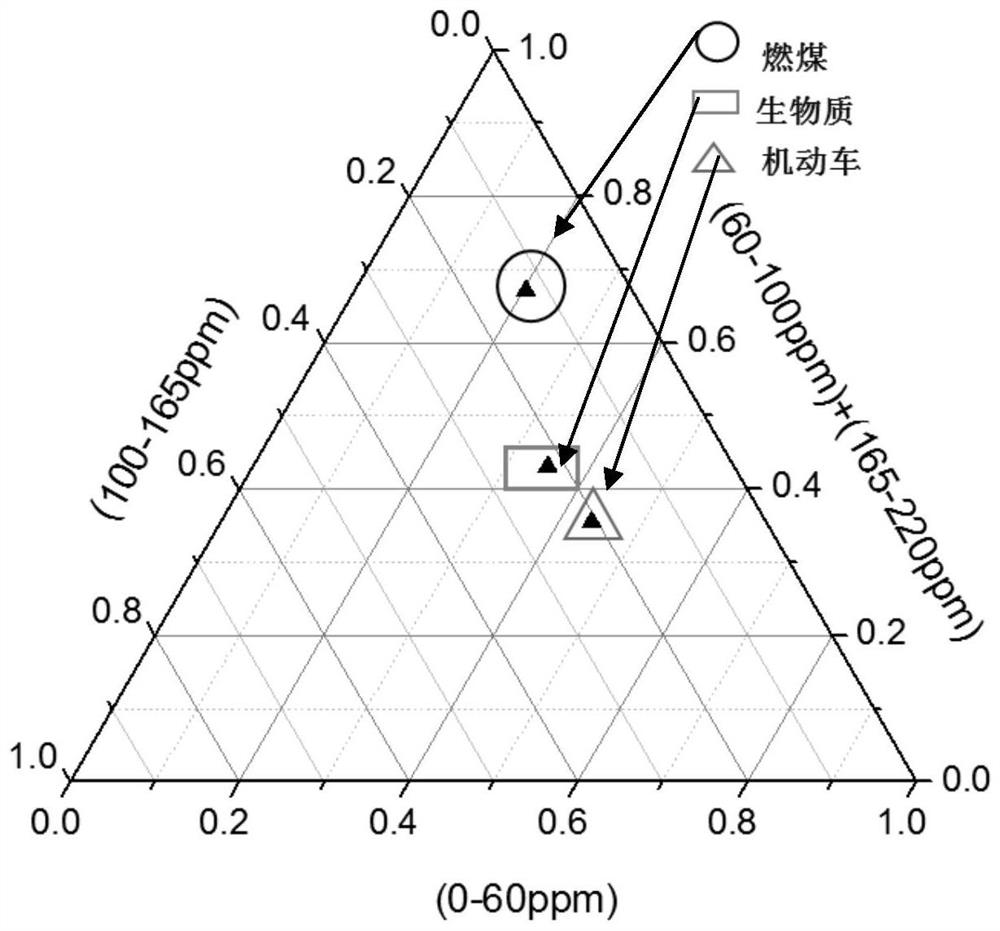A NMR method for distinguishing carbonaceous origins of carbonaceous aerosol components
A nuclear magnetic resonance and aerosol technology, applied in the direction of nuclear magnetic resonance analysis, etc., can solve problems such as low abundance and unobservable nuclear magnetic resonance signals, and achieve the effect of raising awareness
- Summary
- Abstract
- Description
- Claims
- Application Information
AI Technical Summary
Problems solved by technology
Method used
Image
Examples
Embodiment 1
[0017] 1. By simulating the real situation, samples of biomass source aerosol (biomass), coal combustion emission aerosol (coal) and traffic emission (fossil source) aerosol (motor vehicle) samples, which are the main sources of carbonaceous aerosol, are collected. Sample P1 was prepared according to Table 1 (the carbon proportion of three typical carbonaceous aerosol samples).
[0018] Table 1 The carbon proportion of three typical carbonaceous aerosol samples in the proportioning samples
[0019] Sample C% (biomass) C% (motor vehicle) C% (coal) P1 56 15 28
[0020] 2. Utilize 400MHz solid-state nuclear magnetic resonance to analyze 3 types of typical source aerosols in step 1 ( figure 1 ) and the carbon spectrum of the prepared sample P1 ( image 3 ), for data analysis, the functional groups were divided into sp3-hybridized alkyl C (0-60ppm), sp2-hybridized carbon 100-165ppm) and carbon dioxide (60-100ppm+165-220ppm) three types (Table 2), using...
PUM
 Login to View More
Login to View More Abstract
Description
Claims
Application Information
 Login to View More
Login to View More - R&D
- Intellectual Property
- Life Sciences
- Materials
- Tech Scout
- Unparalleled Data Quality
- Higher Quality Content
- 60% Fewer Hallucinations
Browse by: Latest US Patents, China's latest patents, Technical Efficacy Thesaurus, Application Domain, Technology Topic, Popular Technical Reports.
© 2025 PatSnap. All rights reserved.Legal|Privacy policy|Modern Slavery Act Transparency Statement|Sitemap|About US| Contact US: help@patsnap.com



